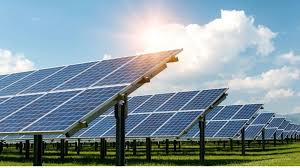WORLD
As the world races toward net-zero emissions by 2050, more than $100 trillion is projected to be invested in sustainable energy infrastructure. However, many of these projects face significant risks, especially in terms of cost overruns and construction delays.
A new study by researchers at the Boston University Institute for Global Sustainability (IGS), published in Energy Research & Social Science, offers the most comprehensive global analysis of such risks, examining 662 energy projects across 83 countries worth over $1.3 trillion.
The study reveals that, on average, energy infrastructure projects exceed their budgets by 40% and are completed nearly two years late. Among all energy sources, nuclear power plants emerge as the most problematic. They typically double their projected costs, with an average overrun of 102.5%, adding approximately $1.56 billion in unforeseen expenses. Delays are also more pronounced in nuclear projects than in any other type.
Emerging technologies like hydrogen production and carbon capture and storage (CCS) also exhibit high financial and timeline risks. These findings challenge the feasibility of rapidly scaling up such technologies to meet climate targets.
In contrast, solar energy and electricity grid transmission projects show the best performance, often coming in under budget and ahead of schedule. Wind farms also fare well, offering favorable financial outcomes with lower risks of delay and overspending.
Lead author Benjamin Sovacool emphasizes that low-carbon technologies such as wind and solar offer not only environmental and energy security benefits but also financial advantages due to reduced construction risk. This makes them more attractive for investment compared to higher-risk, capital-intensive alternatives.
Another key insight from the study involves the diseconomies of scale. Projects larger than 1,561 megawatts are significantly more likely to experience budget overruns. According to co-author Hanee Ryu, this suggests that smaller, modular renewable energy projects might offer better financial predictability and risk management.
The research also considers factors such as governance, construction delays, and project size to identify tipping points for cost escalation. These findings could help stakeholders—from governments to investors—make more informed decisions about energy infrastructure investments as they allocate trillions toward global decarbonization.
In summary, solar and wind energy not only shine in sustainability but also stand out as the safest financial bets in the global transition to clean energy. – TX/ERMD

